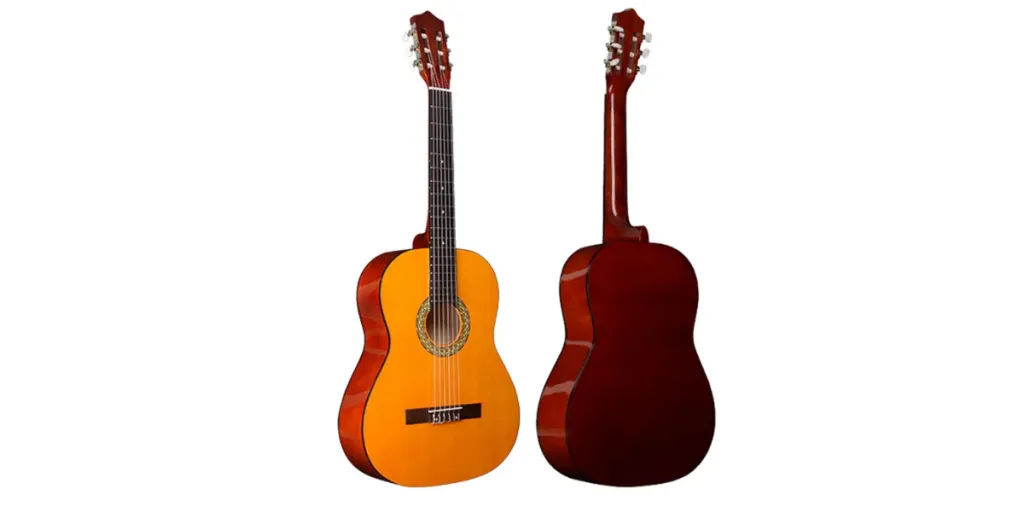Classical guitars hold a timeless charm in the music world that continues to captivate seasoned musicians and budding enthusiasts. The market is filled with many models and brands of classical guitars, but that does not mean they have similar characteristics or produce the same sounds.
That’s why we’ve written this guide on choosing the perfect classical guitar in 2023, as well as the market share of each model.
Table of Contents
Classical guitars vs. acoustic guitars
Classical guitar market share and size
Types of classical guitars
How to choose classical guitars in 2023
Conclusion
Classic guitars vs. acoustic guitars
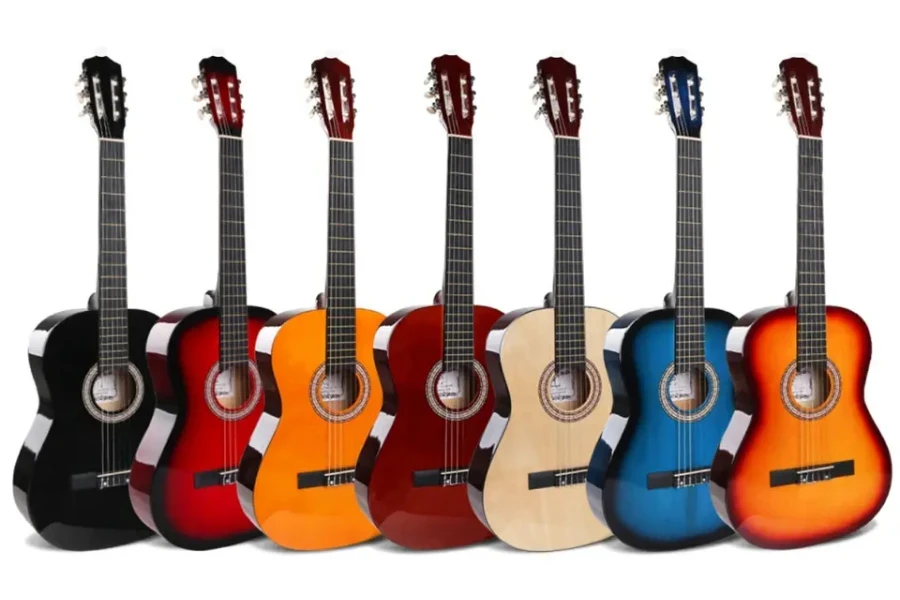
Although classical and acoustic guitars may appear similar at first glance, they differ in numerous ways. The main differences lie in their body shape, neck width, bridge design, and string type.
Acoustic guitars typically come in dreadnought or parlor shapes, have narrower necks, and use a bridge with pegs to secure steel strings, producing a bright, twangy sound ideal for various music genres. In contrast, classical guitars have wider necks, often lack fret markers, use a wrap-around bridge for nylon strings, and produce a mellow, softer sound suitable for classical, Spanish, or flamenco music.
These differences in construction and strings result in distinct tonal qualities, making each type of guitar suited to specific musical styles and player preferences.
Classical guitar market share and size

The classical guitar market has experienced a significant upswing in market size in recent years, with the item receiving 201,000 monthly searches on average – much more than any other type of guitar – according to Google Ads.
A significant factor causing this demand is the enduring charm of classical guitar music, which has seen a resurgence in popularity across various musical genres. The global appetite for acoustic instruments has also increased, further contributing to the classical guitar’s appeal.
Regions with notable demand include North America, where a vibrant acoustic music scene thrives, and Europe, known for its rich classical music heritage, especially in Spain, the home of flamenco music. Furthermore, emerging markets in Asia, such as China, buoyed by a growing middle class and an increasing fascination with Western music traditions, have significantly expanded the classical guitar’s market size and global share.
Types of classical guitars
Concert

Classical concert guitars boast a classic design characterized by their traditional shape. With a broader neck and a generously proportioned body, these guitars generate a mellower, resonant tone cherished by classical guitarists and solo artists alike.
The wider neck allows for precise fingerpicking and intricate chord progressions, while the fuller body contributes to a harmonious and warm sound profile. According to Google Ads, classical concert guitars average around 2,900 monthly searches.
Flamenco

Crafted to capture the fiery essence of flamenco music, flamenco classical guitars are distinctly characterized by their shallower body design, contributing to their lively and percussive sonic landscape. These guitars are well-suited for the distinctive tapping and rasgueado techniques integral to flamenco performances.
They often feature tap plates on the body to withstand the vigor of these rhythmic expressions. Meanwhile, the shallower body enhances the guitar’s responsiveness, allowing for the quick and dynamic fingerstyle playing that is the hallmark of flamenco music.
Cutaway
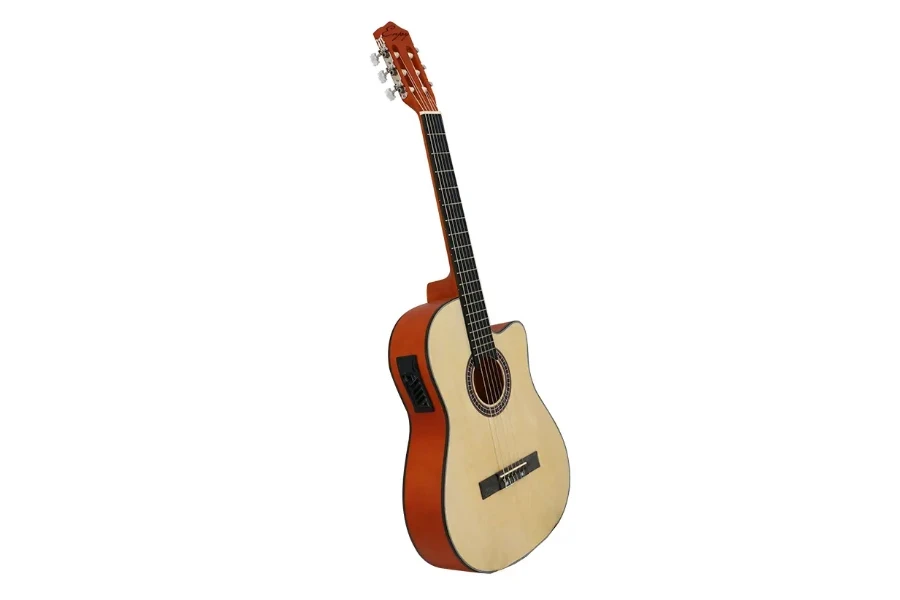
Cutaway classical guitars are named for their unique design feature, a “cutaway” near the neck that allows easier access to the higher frets. This innovation is especially valued by guitarists who frequently delve into the upper register, as it significantly improves their capacity to play solos higher up the fretboard and execute complex fingerings with precision.
This feature is valuable for those seeking to extend their musical range and explore a classical guitar’s full spectrum of tonal possibilities. They receive more than 1,300 monthly searches on Google.
Crossover
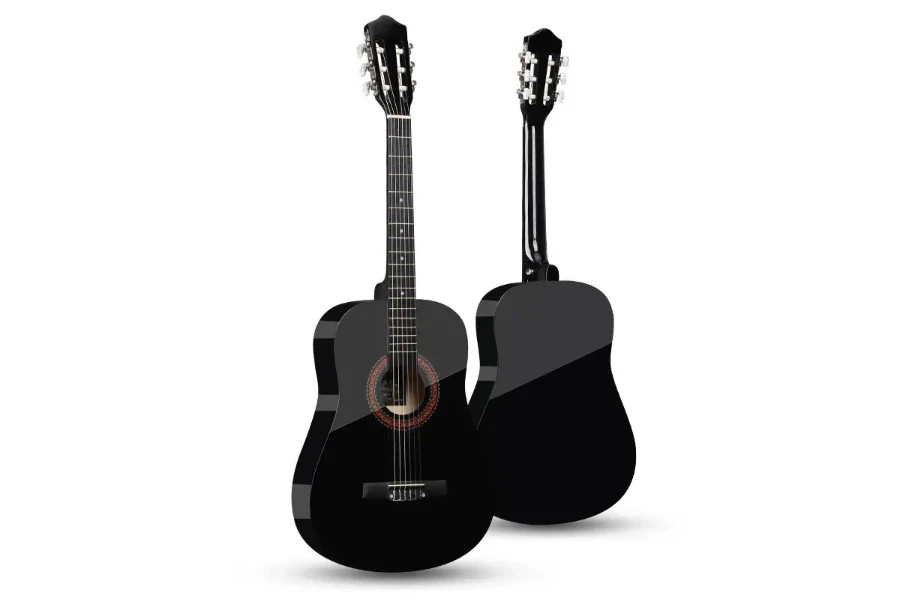
Crossover classical guitars serve as a vital link between classical and acoustic guitar playing. They’re recognized for their narrower neck and subtly curved fingerboard, providing a comfortable transition for musicians shifting from steel-string acoustics or electric guitars to the world of classical nylon strings.
These versatile instruments are adept at accommodating a wide range of playing styles and genres, making them a preferred choice for those who want flexibility in their musical expression. Whether delving into classical compositions, exploring acoustic folk, or experimenting with other acoustic genres, crossover guitars offer a harmonious blend of tonal attributes, helping to make the journey from one guitar world to another a smooth and enjoyable experience.
How to choose classic guitars in 2023
As well as the different types of classical guitars, each features attributes that will affect their sound, style, and price. Below, we look at a few of the most essential elements.
Tonewood
The type of wood used for different parts of a guitar has a profound impact on how they sound and play.
Top
The top of a guitar, known as the soundboard, is crucial to imbuing it with a specific tone. Many guitar makers prefer spruce for soundboards because it produces a bright, clear tone, making it excellent for fingerstyle playing. Alternatively, cedar is favored for its warmth and responsiveness, resulting in a mellower, more expressive sound.
Back and sides
The back and sides of a guitar affect its projection and tonal color. Rosewood is beloved for its deep bass and shimmering treble, adding complexity to the sound. On the other hand, mahogany is known for its warm and balanced tone, making it ideal for blues and folk guitars.
Neck
The wood chosen for the neck of the classical guitar affects playability and stability. Guitars often feature mahogany and maple necks. Mahogany offers a comfortable feel, while maple provides stiffness and imparts a bright tone to the instrument.
Fingerboard and bridge
The materials used for the fingerboard and bridge also notably impact how the guitar plays. Common choices include rosewood and ebony. Rosewood adds warmth, while ebony provides a clear, bright tone.
Nut and saddle
The nut and saddle materials affect intonation and sustain. Players can choose materials like bone or synthetic options like TUSQ. These choices influence the guitar’s tuning stability and resonance, impacting the guitar’s ability to stay in tune and produce clear notes.
Cost
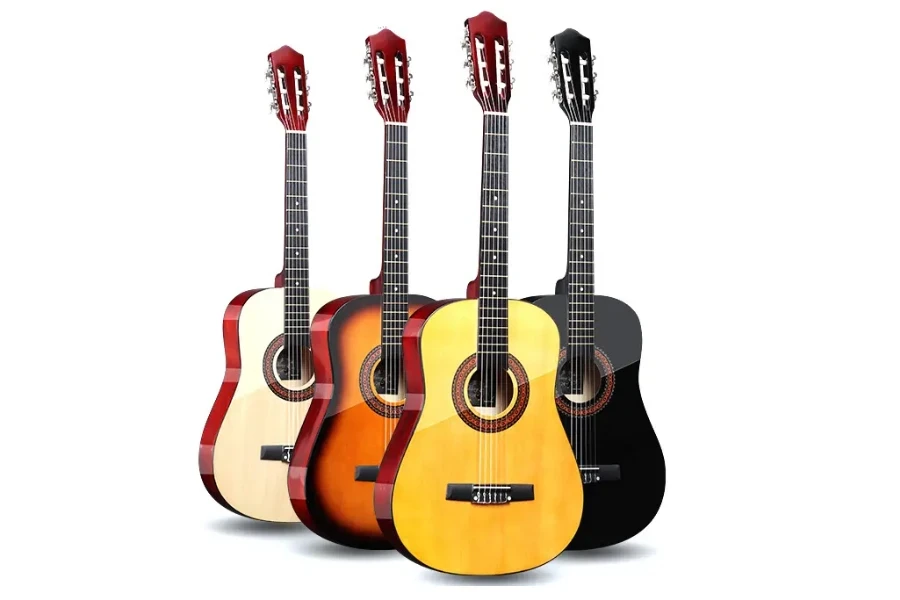
Classical guitars have a broad price spectrum, with options ranging from US $100 for entry-level instruments to US $10,000 for top-tier, professional-grade guitars. Striking the right balance between your budget and the quality of craftsmanship is essential. As you explore the market, consider variables such as the construction materials used and the manufacturer’s reputation.
Scale length
The length of a guitar’s scale significantly impacts how it feels to play and the sound it produces. Longer scales, usually around 650mm, tend to provide higher string tension and project a more powerful sound, making them a favorite among traditional classical musicians.
In contrast, shorter scales, like 640mm, can make it easier to navigate the fretboard, which is particularly advantageous for those switching from steel-string acoustic guitars.
Nut width
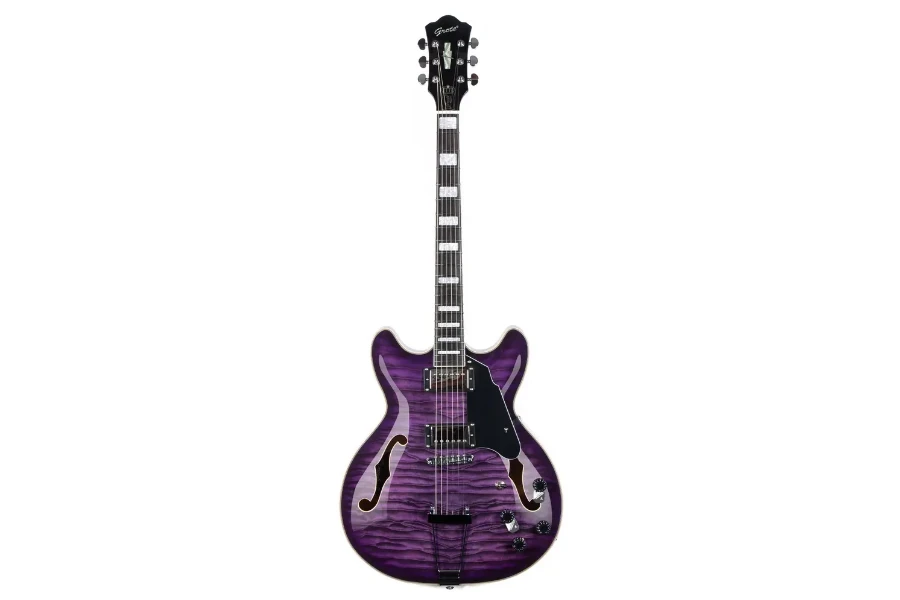
The width of the nut, the small piece at the top of a guitar’s neck, significantly influences how comfortably and effortlessly the guitar can play. A wider nut, typically around 52mm, is ideal for classical fingerstyle and intricate classical compositions, providing ample space for precise finger movements.
On the other hand, a narrower nut, defined as one measuring roughly 48-50mm, caters to players making the switch from steel-string guitars. This narrower width allows for a smoother adjustment period, as it aligns more closely with the finger spacing of steel-string instruments.
Tuning machines
The performance of a classic guitar’s tuning machines directly impacts its ability to stay in tune reliably. Tuning machines that operate smoothly and with precision offer pitch-perfect accuracy during performances, reducing the frustration of needing to frequently retune the instrument and enhancing the overall playing experience.
Durability
A classical guitar’s overall construction and materials should be prioritized for lasting durability. A well-made classical guitar, fashioned from premium woods and crafted with meticulous attention to detail, can endure the wear and tear of regular play and stand the test of time. With proper care and maintenance, these finely constructed instruments can last for decades, if not generations, while preserving their sound quality and integrity.
Conclusion
Selecting the perfect classical guitar in 2023 is an artful process where every aspect, from tonewood to durability, should be considered. With an extensive selection of classical guitars from trusted sellers, you’re bound to find what you’re looking for on Alibaba.com, no matter your price or model requirements.
